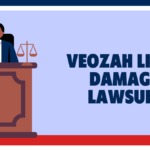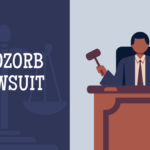Welcome to the scandalous world of “barely legal.” In this provocative blog post, we will explore the tantalizing and sometimes controversial topic of age boundaries in various industries. From music to fashion to adult entertainment, join us as we delve into the intriguing gray area where legality meets temptation. Buckle up and get ready for a wild ride through the blurred lines of what’s acceptable and what’s forbidden.
Introduction: Explaining the Concept of “Barely Legal”
The phrase “barely legal” has become a common term in modern society, often referring to young individuals who have just reached the age of legal adulthood. However, this term is not just limited to age or legality, but it also carries a connotation of youthfulness and vulnerability.
“Barely legal” refers to someone who is at the cusp of becoming an adult, usually between 18-21 years old depending on the jurisdiction. This phase of life comes with newfound freedoms and responsibilities that may seem overwhelming for those who have just transitioned from being minors.
The concept of “barely legal” can be seen as both empowering and problematic. On one hand, it signifies a new level of independence and agency for individuals who are no longer under parental or legal guardianship. On the other hand, it also highlights their vulnerable position in society as they navigate this transition into adulthood.
In popular culture, the term “barely legal” is often associated with sexual objectification and exploitation. It is used to describe young girls or women whose age makes them legally eligible for sexual activities but lacks emotional maturity to fully understand the consequences of their actions. This objectification reduces these individuals to mere objects of desire rather than recognizing them as individuals with their own thoughts and agency.
Moreover, societal expectations and pressures surrounding the concept of “barely legal” can also contribute to its problematic nature. The pressure to act a certain way or conform to societal norms during this phase can lead individuals astray as they try to figure out their identity and place in society.
However, it is crucial to note that being “barely legal” does not solely revolve around sexuality or immaturity. It is a stage where individuals are still discovering themselves, making mistakes, learning from experiences, and ultimately growing into accountable adults.
To conclude, while the concept of “barely legal” carries a negative connotation, it is important to recognize the complexities of this phase of life. It is a time of transition and growth that comes with its own set of challenges and opportunities. As society, it is our responsibility to support and guide these individuals as they navigate through this chapter in their lives.
The age of consent and its importance
The age of consent is defined as the minimum age at which a person is considered legally competent to give their consent for sexual activity. In most countries, this age ranges from 16 to 18 years old, and it serves as an important legal protection for young individuals.
One of the primary reasons why there is an age of consent law is to protect minors from potential exploitation or abuse in sexual relationships. It acknowledges that young people are not yet fully mature emotionally, physically, and mentally to make informed decisions about engaging in sexual activity. By setting a minimum age, it prevents older individuals from taking advantage of younger ones who may not understand the consequences of their actions.
Moreover, the concept of informed consent plays a crucial role in understanding the importance of the age of consent. Legally, individuals must be able to give their full and enthusiastic consent without being under any influence or pressure. Children or teenagers under the designated age are deemed incapable of giving true informed consent because they may not have enough knowledge about sex or relationships.
Another critical aspect is protecting minors’ physical and emotional well-being. Sexually transmitted infections (STIs) and unplanned pregnancies are more likely among teenagers who engage in sexual activities without proper education and protection measures. The age of consent helps address these risks by ensuring that only consenting adults engage in sexual relationships.
Furthermore, having an established age limit also simplifies legal proceedings when dealing with cases involving minors and sexual offenses. It provides clarity on whether a person has crossed any boundaries if they have engaged in sexual activities with someone under the designated threshold.
However, it’s essential to note that while having legal boundaries can provide some level of safety for adolescents, it cannot solely prevent all forms of exploitation or abuse. It’s crucial for parents/guardians and educators to educate children about healthy relationships, bodily autonomy, and how to identify red flags in potential situations.
The establishment and enforcement of an appropriate age of consent play a crucial role in protecting the physical, emotional, and legal rights of minors. It serves as a safeguard against manipulation and exploitation while promoting healthy and consensual relationships among adults.
The rise of “barely legal” in popular culture
The term “barely legal” has become a prevalent phrase in popular culture, often used to describe something or someone who is underage yet portrayed in a sexualized manner. This concept has been increasingly depicted in various forms of media such as films, music videos, and fashion campaigns. But what exactly does this term mean and why has it gained so much attention?
The rise of the phrase “barely legal” can be traced back to the early 2000s when it first gained momentum in pornographic content. It was initially used to describe actors who were over 18 but could pass off as minors due to their youthful appearance. This trend quickly spread beyond adult entertainment and seeped into mainstream media, with a focus on young women who are desirable because of their perceived innocence and vulnerability.
One of the main factors contributing to the popularity of the “barely legal” trope is society’s obsession with youthfulness and perfection. In today’s age where social media sets unrealistic beauty standards, younger individuals are considered more attractive and desirable. The idea of being “barely legal” gives a sense of taboo and excitement for older individuals as they seek out these young women who seem untouchable.
Additionally, the sexualization of minors has become increasingly normalized in our culture through media depictions. These young characters are often portrayed as seductive and sexually experienced despite their supposed lack of maturity. This blurs the line between adults and underage individuals, creating confusion about appropriate boundaries.
Another aspect that contributes to the popularity of “barely legal” is its profitability in certain industries like fashion and advertising. Brands use this controversial theme to grab attention from consumers by pushing boundaries and stirring controversy, which ultimately translates into profit for them.
However, there have been concerns raised about how this portrayal may affect young viewers’ perceptions towards sex and relationships. Studies have shown that repeated exposure to hypersexualized images can lead to unhealthy attitudes towards intimacy and can also contribute to the objectification of women.
While the phrase “barely legal” may seem like a harmless catchphrase in popular culture, it actually has concerning implications. It perpetuates the harmful notion that youth and sexuality go hand in hand, blurring boundaries between minors and adults. It is essential to be mindful of how we consume media and recognize the impact it can have on our perceptions and behaviors.
Legal implications and controversies surrounding “barely legal”
The term “barely legal” is often used in a provocative and sensational manner, usually accompanied by sexual undertones. This phrase has been popularized in pop culture, especially in music and media where it refers to individuals who are just reaching the legal age of consent or adulthood. However, behind the seemingly harmless phrase lies a complex web of legal implications and controversies.
One of the most significant concerns surrounding the concept of “barely legal” is its association with underage individuals. In some cases, this phrase is used to describe minors who are just on the cusp of turning 18 and becoming legal adults. This raises serious ethical questions about sexualizing or objectifying young people who may not have reached emotional maturity to fully understand their rights and choices.
Moreover, the use of “barely legal” can also have severe legal consequences in cases involving child pornography. Some individuals may mistakenly believe that any sexual content featuring someone over 18 years old is automatically considered lawful. However, this is not always the case as there are laws governing explicit material involving younger-looking actors or models posing as minors, known as pseudo-child pornography.
The production, distribution, possession, and consumption of such material can result in criminal charges under federal and state laws. Furthermore, using phrases like “barely legal” to market or promote such content can lead to additional penalties for obscenity crimes.
Another significant controversy surrounding “barely legal” is its potential for exploitation by predatory individuals targeting naive young adults who may be eager to explore their sexuality or gain financial benefits from adult industries. These young adults could potentially fall victim to sexual coercion or manipulation under false promises or inducements presented by those looking for vulnerable targets.
Furthermore, there have been debates about whether phrases like “barely legal” fuel societal attitudes towards objectifying women and perpetuating harmful cultural norms related to youthfulness being equated with desirability.
While the term “barely legal” may seem harmless and even titillating in popular culture, it’s essential to acknowledge the legal implications and controversies surrounding it. Its use can have damaging consequences for minors, promote illegal activities, and contribute to harmful societal attitudes. As responsible individuals, we must strive to understand and challenge the narratives perpetuated by this phrase.
How society views individuals who are considered “barely legal”
In today’s society, the term “barely legal” is often used to describe individuals who have recently reached the age of legal adulthood, typically 18 years old. While technically these individuals are now legally recognized as adults, in reality they are often viewed differently by society.
On one hand, there is a sense of excitement and celebration surrounding becoming “barely legal.” It is seen as a major milestone and a sign of growing maturity and independence. Turning 18 means being able to vote, buy lottery tickets, and legally drink in some countries. There may also be a sense of newfound freedom as one becomes responsible for their own decisions and actions.
However, on the other hand, there is also a negative connotation associated with being “barely legal.” In many cases, this term is used to objectify or sexualize young women who have just reached the legal age of consent. The idea that someone has just become “fair game” can lead to uncomfortable or even dangerous situations for young adults.
Unfortunately, society often perpetuates this stereotype through media and pop culture. Young men and women are bombarded with messages that equate turning 18 with being sexually available and mature enough to handle adult situations. This can create pressure for individuals to engage in behaviors they may not be ready for or comfortable with.
Additionally, society may view those who are considered “barely legal” as inexperienced or naive. As younger adults navigate their way into adulthood, they may face judgment or skepticism from older generations who see them as inexperienced and immature. This can create challenges when trying to establish credibility or make important decisions related to education or career paths.
Furthermore, there is a double standard when it comes to how males versus females are viewed when reaching the age of legality. While young men may be praised for coming of age and encouraged to explore their sexuality freely without much stigma attached, young women are often shamed for doing the same and labeled negatively.
Society’s views on individuals who are considered “barely legal” often include a mix of both positive and negative perceptions. As a society, it is important to recognize the complexity and nuance behind this term and avoid objectifying or stereotyping young adults based solely on their age. Every person is unique and should be judged as an individual rather than being defined by a label.
The impact on those who identify as “barely legal”
The term “barely legal” is often used to describe someone who has just reached the legal age of adulthood. This can typically refer to individuals who are 18 or 19 years old, depending on the country or state they reside in. However, this label and its connotations have a significant impact on those who identify as “barely legal.”
One of the most significant impacts is societal expectations and stereotypes. People who belong to this demographic are often seen as inexperienced, naive, and vulnerable. They may be viewed as individuals who are not fully capable of making informed decisions due to their young age. This perception can lead to patronizing behavior from others, which can be frustrating and insulting for those who identify as “barely legal.”
Along with societal expectations, there is also pressure from peers and media influences. In today’s society, there is a considerable emphasis on youthfulness and staying young forever. Individuals who have just turned 18 or 19 may feel like they need to act older than their age to fit in with their peers or adhere to society’s standards. This pressure can cause them to engage in reckless behaviors, such as drinking excessively or engaging in risky sexual activities.
Moreover, being labeled as “barely legal” can also affect one’s self-esteem and confidence. Constantly being reminded that you are still a teenager in the eyes of society can make one feel inadequate compared to older adults. This feeling of inadequacy can lead to self-doubt and insecurity about one’s abilities.
Additionally, this label has implications concerning consent and boundaries, especially when it comes to romantic relationships. Someone being categorized as “barely legal” may encounter individuals who assume that they are too young to understand what they want or what their boundaries are. This assumption disregards an individual’s agency over their own body and decisions.
Furthermore, individuals who identify as “barely legal” may face challenges when it comes to navigating adulthood. They may struggle with finding employment, managing finances, or making significant life decisions. This is because they are often not taken seriously and can be dismissed as too young or inexperienced.
Being labeled as “barely legal” has a profound impact on those who belong to this demographic. It can lead to societal expectations and stereotypes, peer pressure, lower self-esteem, and challenges in navigating adulthood. As such, it is vital to recognize and respect that individuals have different journeys and experiences regardless of their age.
Exploitation and exploitation in the industry
Exploitation and exploitation in the industry is a topic that has gained more attention in recent years, as more and more people become aware of the dark side of some industries. This refers to the act of taking advantage or using someone or something for personal gain, often at the expense of others. The concept of exploitation can come in many forms, but its effects are always damaging and harmful.
One industry where exploitation is prevalent is the fashion industry. The allure of this glamorous world often masks the harsh realities that models, especially young ones, face. Underage models, sometimes as young as 14 years old, are being exploited by agencies and brands who prioritize profit over their well-being.
These young models are often put under extreme pressure to maintain a certain body type and appearance, which can lead to eating disorders, mental health issues, and even substance abuse. They are also expected to work long hours with little pay while having limited access to proper working conditions like breaks and adequate sleep.
Moreover, many underage models are not given proper legal protection or representation due to their age. As a result, they may be subjected to inappropriate demands from photographers or clients without anyone standing up for their rights.
Another industry known for rampant exploitation is the entertainment industry. Child actors who become popular at a young age are particularly vulnerable as they may not have a strong support system around them to navigate through the pressures of fame. They may fall prey to manipulative managers or directors who promise success in exchange for compromising tasks.
Furthermore, women in this field face various forms of exploitation too – from unequal pay compared to their male counterparts to being sexually harassed on set. Despite movements like #MeToo shedding light on these issues and calling out perpetrators, there still remains a culture of silence which allows these exploitations to continue unchecked.
It is crucial for individuals in positions of power within these industries to acknowledge and address the widespread issue of exploitation. It is also important for consumers to be aware of the impact their choices can have on supporting or rejecting exploitative practices. By working together, we can create a safer and fairer industry for all individuals involved.
The blurred lines between “barely legal” and other age-related terms
The term “barely legal” is often used to describe individuals who have recently reached the age of consent, typically 18 years old. It implies a sense of borderline legality and can be seen as controversial or even taboo in certain contexts. However, there are other age-related terms that may seem similar to “barely legal” but have distinct differences.
One commonly confused term is “legal age.” This refers to the age at which an individual is considered legally competent and responsible for their actions. In most countries, this is around 18 years old. Unlike “barely legal,” which has connotations of youthfulness and inexperience, “legal age” does not necessarily have any associations with maturity or innocence.
Another related term is “age of majority.” This refers to the legally defined age at which a person becomes an adult and gains full rights and responsibilities under the law. In some countries, this may be 18 years old while in others it may be as high as 21 years old. Similar to “legal age,” it does not carry any associations with youth or naivety.
“Consenting adult” is yet another term that can often get tangled up with “barely legal.” A consenting adult refers to someone who has reached the legal age of consent and can make decisions about their own sexual activities without interference from others. While this may include individuals who are barely 18 years old, it also encompasses older adults who may engage in consensual activities with partners outside their own peer group.
The lines between these various terms can indeed become blurred and confusing, especially when discussing sensitive topics such as sexual relationships involving younger individuals. It’s important to note that while someone may technically fall into one category (e.g., being barely legal), they could still fit into other categories as well (e.g., being of legal age and considered an adult).
In addition, it’s crucial to always remember that just because someone has reached the age of consent, it does not automatically mean they are ready for or capable of fully consenting to sexual activities. This is where the concept of “age of consent” comes into play – which refers to the minimum age at which a person is considered legally able to give informed consent for sexual activities.
There are many age-related terms that may seem similar to “barely legal” but have distinct meanings and implications. It’s important to understand and recognize these differences in order to have informed discussions about topics such as sexual relationships involving younger individuals.



